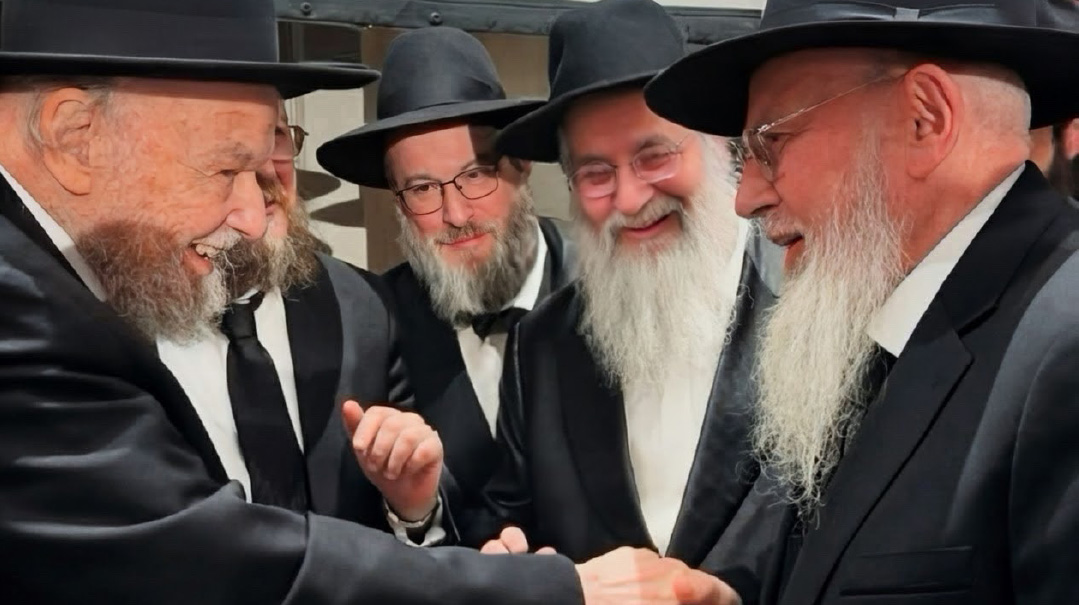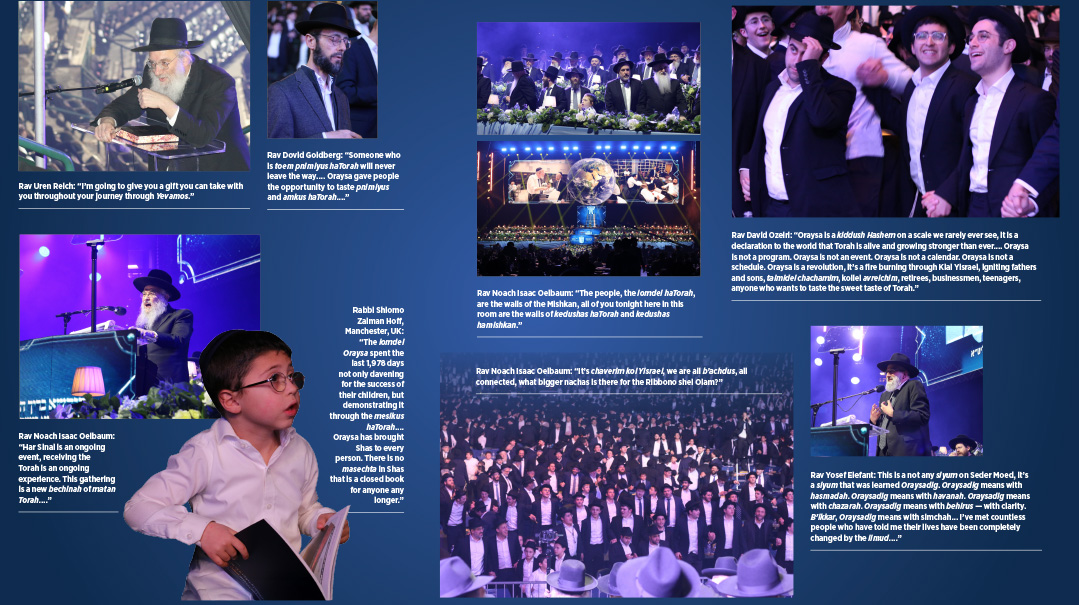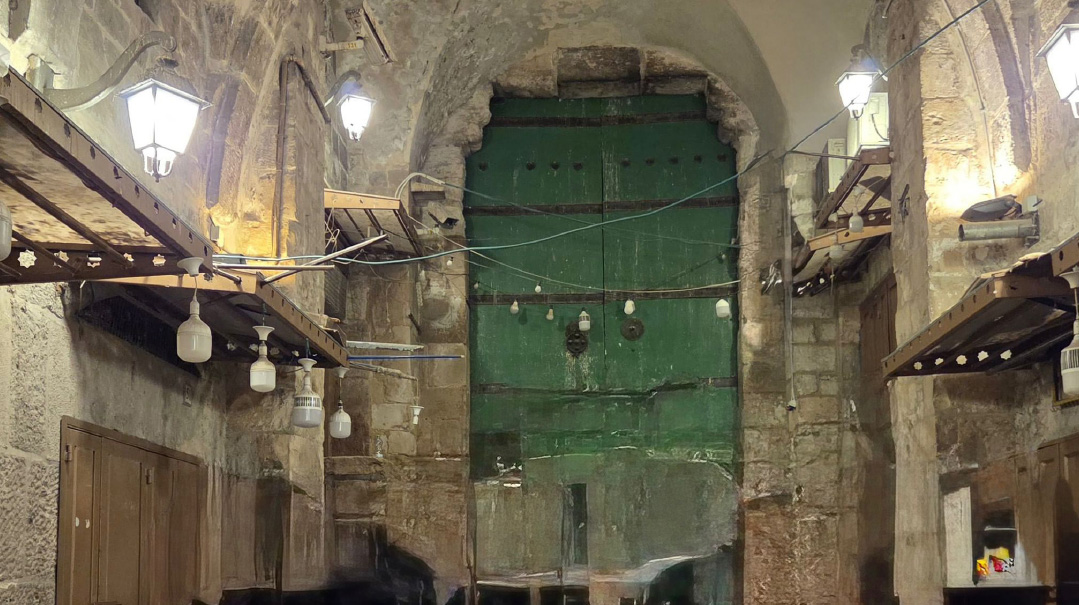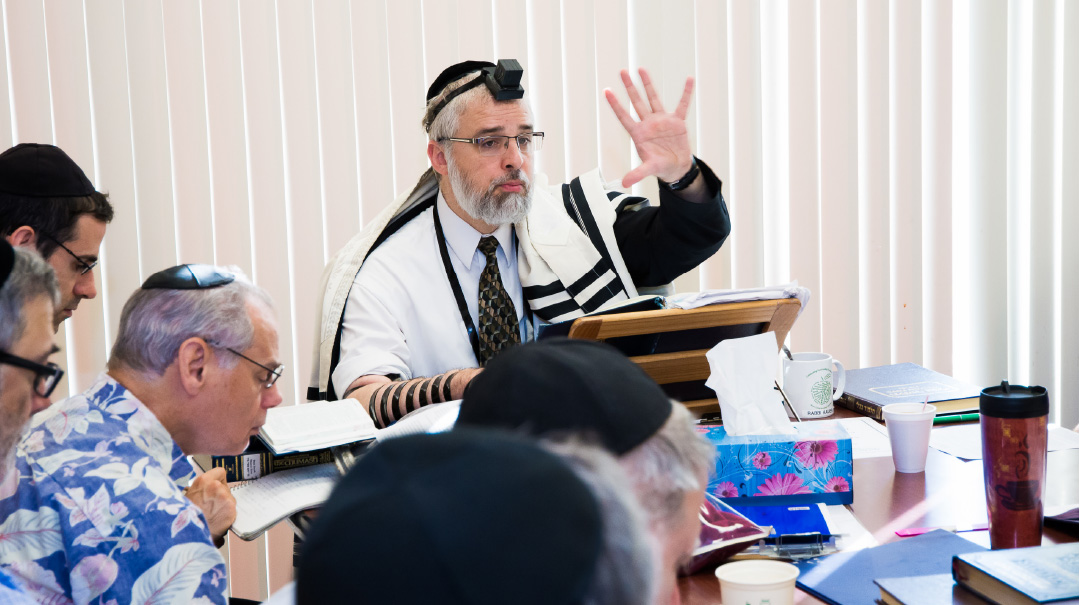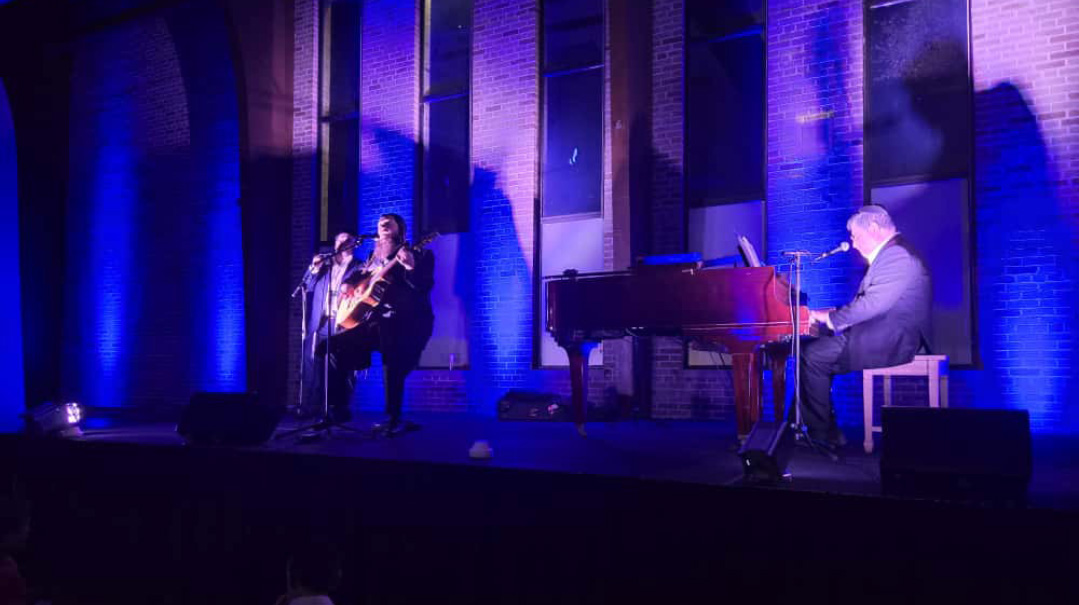Complete Revolution
| July 16, 2024The gathering was a sign of the extent of the revolution in learning now underway

Photos: Akiva Schlesinger, Kobi Har Tzvi
For the hundreds of bochurim who were publicly tested on entire masechtos in a groundbreaking initiative for the yeshivah world, the joy of completion was eye-opening.
C
all it large-scale hatavas chalom. On a Thursday night two weeks ago, hundreds of bochurim from Israel’s leading yeshivos listened as Rav Chaim Peretz Berman, a ram at Yeshivas Ponevezh, asked the following question. “Some decades ago, I was learning Maseches Gittin, and at night I dreamed that I was at beis din, and a husband and wife came. The husband said, ‘I divorced my wife,’ and the wife said the same thing. One dayan stood up and said, ‘There are two reasons to believe that they are telling the truth.’ ”
Rav Chaim Peretz paused, and then challenged the bochurim, “What are the two reasons?”
In the large auditorium in the city of Elad, a full-blown war broke out. Bochurim threw around ideas, and Rav Chaim Peretz accepted some, rejecting others as the the full picture gradually came together, in an impressive display of halachic crowdsourcing.
The scene was a remarkable event by Dirshu, headlined “Sinai V’oker Harim,” intended to mark a new stage in the organization’s efforts to return true bekius – breadth in Torah learning – to its proper place in the yeshivah world.
For decades, leading roshei yeshivah bemoaned the ever-shrinking horizons of bochurim who struggled to finish a masechta. Rav Aharon Leib Steinman spoke to the importance of bekius learning (Mipikudecha Esbonan, Vol. II, p. 53): “Those who think that the proper way of learning has to be always lingering over every detail one learns — why, to finish the Shas they’ll need about a thousand years. And you can’t be a real talmid chacham if you don’t know Shas. So how will they become talmidei chachamim?”
Current Rav Dovid Cohen, Rosh Yeshivas Chevron recalled that “We learned in yeshivah from Rav Meir Chodosh ztz”l, that the bekius seder needs to complete five dapim a week. That’s what he would always say, and that’s how we got it. With me, he was always angry. I had four dapim, I wouldn’t do five.”
Thus, was born the initiative to test bochurim on entire Masechtos.
This Dirshu program is a unique track in which yeshivah bochurim complete, over the course of the zeman, the masechtos being learned b’iyun, learning the in-depth sugyos along with the yeshivah schedule and utilizing the remaining hours of the day to cover the remaining dapim of the masechta, so that each bochur finishes the entire masechta.
The result was hundreds of yeshivah students with solid knowledge of wide swaths of the Shas — knowledge on which they were now being tested, closed-book, called upon to answer complex questions requiring broad and in-depth knowledge of the masechtos.
The quiz itself followed a unique format. At the entrance to the hall, each bochur received a sign with a letter; when a question was asked to which he knew the answer, he had to hold up his sign — but he was only allowed to answer if his letter was called. The event was kicked off by Rav Hillel Mann, of Yeshivos Nesivos Chochmah and Bircas Shmuel, who warmly greeted the roshei yeshivah as well as Rav Dovid Hofstedter, nasi of Dirshu.
Rav Mann began by referencing the tragedy of this past Simchas Torah, and subsequent events, eight months ago, up to Rosh Chodesh Tammuz: “The people sitting here, the 3,500 yeshivah bochurim being tested in the Dirshu bnei hayeshivos track, have, over the past eight months, since that Simchas Torah, each learned 160 dapim and reviewed them at least twice. That’s 560,000 dapim. If you multiply that by all the reviews, you get to 1,680,000 dapim of Gemara that have been learned in the last eight months. And we know that now, of all times, we have nothing stronger than the koach haTorah, the only thing that can defeat any trouble or tragedy threatening us.”
The quiz itself was started off by Rav Chaim Feinstein, Rosh Yeshivas Ateres Shlomo. “Where in Maseches Kesubos do we find the concept of rachamim b’din, of mercy being a consideration in monetary lawsuits?”
A row of signs popped up. Reish-mem-alef was called upon to answer: “In a case where someone is chayav malkos for a monetary offense — an eid zomem, or someone who injures another — he pays rather than getting malkos, and Tosafos explains the reason is that the Torah takes pity on the injured party’s loss.”
The Rosh Yeshivah turned his head this way and that, thinking. “I hear that,” he said, “but I was thinking of something else.”
Taf-kuf-chaf-tes offered his answer, and Rav Chaim smiled broadly: “Excellent!” But he hastened to add, “The previous answer was also correct!”
The concepts were tossed back and forth through the hall: “terumas halishkah,” “shuda dedayanei,” “hazamah,” and on and on. But these were not merely questions and answers; they were full-fledged shakla v’tarya of talmidei chachamim. Rav Chaim did not make it easy for anyone, and the young scholars defended their answers and explain their meaning; sometimes the discussion branched out into lomdus — is this a general din in the act of hazamah, or a specific, case-dependent halachah?
The Rosh Yeshivah was impressed and moved. He concluded his turn with a commendatory speech, and Rav Baruch Dov Diskin, Rosh Yeshivas Orchos Torah, stepped up to the examiner’s post: “In which aspects are we makish havayah and yetziah?”
A commotion broke out. Dozens of signs sprang up, and Rav Baruch Dov tried to navigate the flood of answers: “That’s not l’kulei alma. That’s right; someone already mentioned that…” And so on, until he was satisfied that all the instances had been covered, including the hava amina in Perek Hazorek. The Rosh Yeshivah was beaming, as were the bochurim, who saw their labor of the past eight months paying off.
Next to take the examiner’s stand was Rav Isamar Garboz, Rosh Yeshivas Orchos Torah. He began by citing the story told by the Rambam of the time he was asked about a psak he had given on a halachah that should seemingly have appeared in Sanhedrin or Makkos, but which in fact appears in Gittin and Yevamos.
Rav Isamar scarcely finished asking the question, when a sign was raised, taf-mem-beis. The bochur holding the sign was somewhat shy — but his answer hit the mark, or so it seemed: “That a woman can be exiled to an ir miklat.”
“That is correct,” said the Rosh Yeshivah, “but that is in Gittin, but not in Yevamos…”
Taf-mem-beis didn’t give up: “If the rotzeiach slit one siman or most of one, b’shogeg he doesn’t go to the ir miklat, but b’meizid he is chayav misa.”
At one stage, the microphone passed to Bnei Brak’s Sephardic av beis din, Rav Masoud Ben Shimon, who presented a battery of questions about shelichus. He wove the threads of the topic from Kiddushin to Bava Kamma, from Bava Metzia to Bava Basra. It was a sight to behold: a leading Sephardi rav firing off questions to bochurim from Litvish and Chassidish yeshivas.
With bochurim from a cross section of Israel’s vast Torah world represented, the gathering was a sign of the extent of the revolution in learning now underway.
It was left to Rav Dovid Hofstedter to note what was evident to all present: that the knowledge on display from the bochurim – both in terms of breadth and depth – was remarkable. “We see vividly in our times that despite all the battles waged against the bnei hayeshivos over the past few decades, it is precisely in these decades that we have attained historic highs in the sheer scale of Torah learning.”
(Originally featured in Mishpacha, Issue 1020)
Oops! We could not locate your form.


